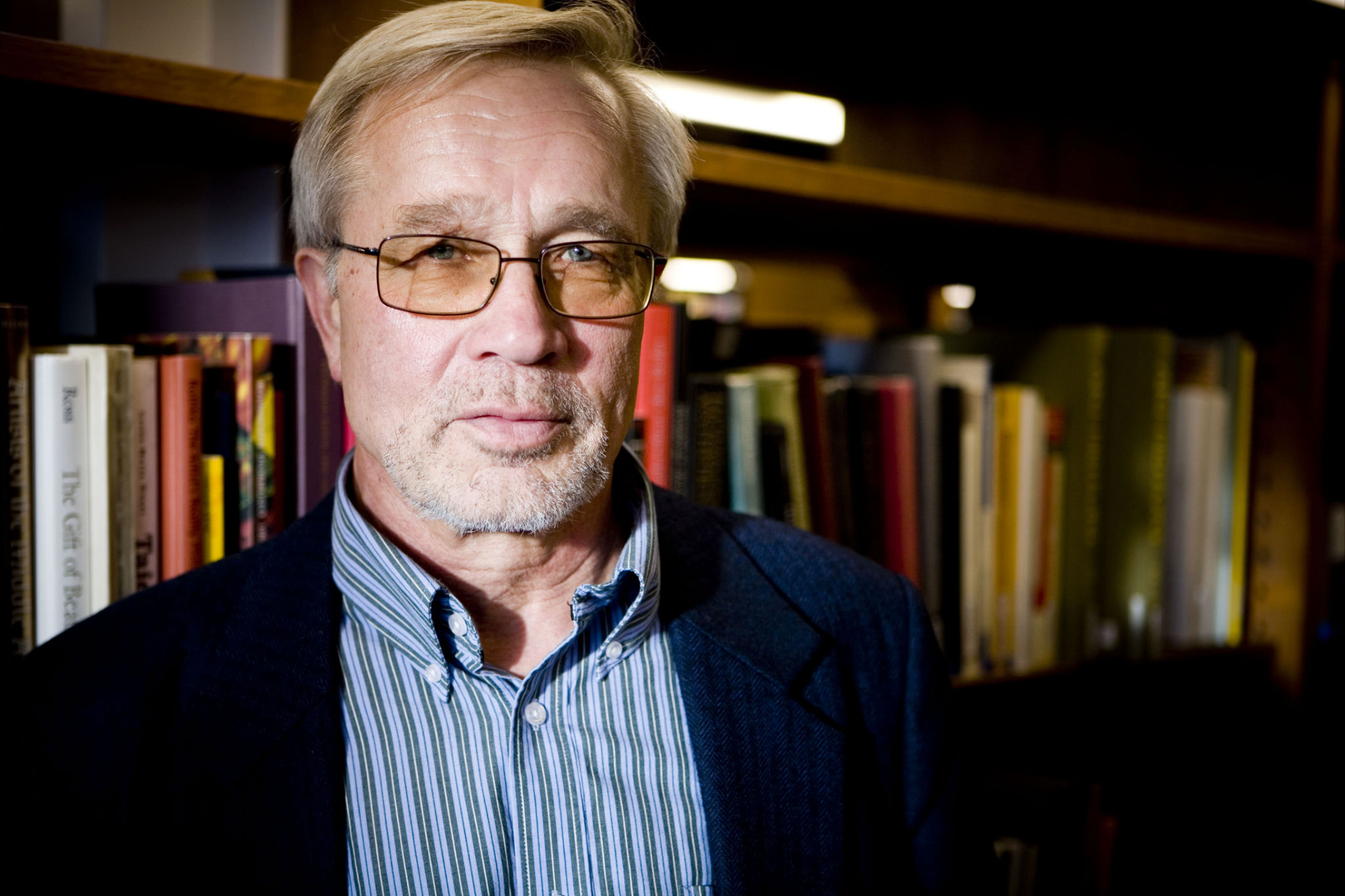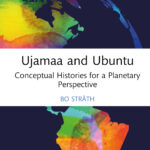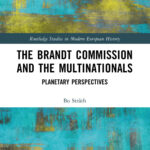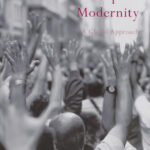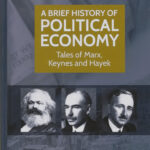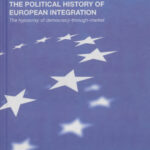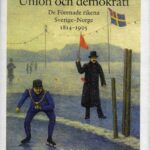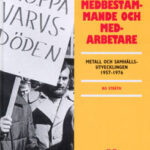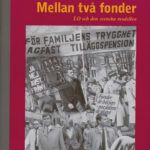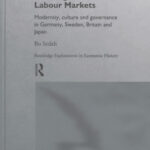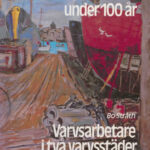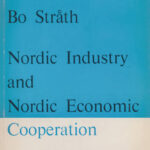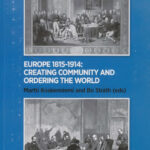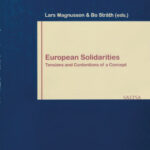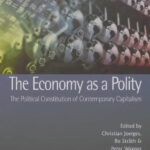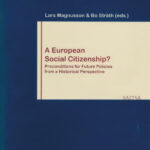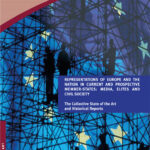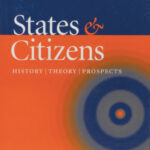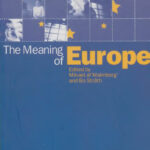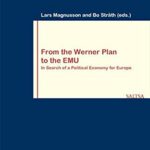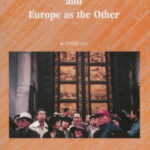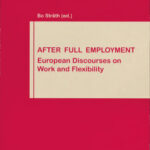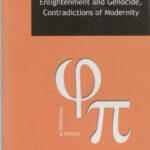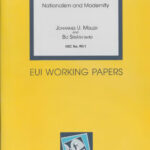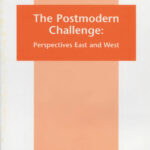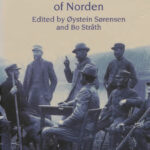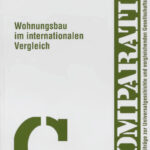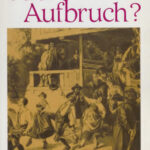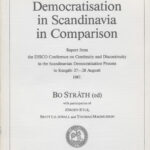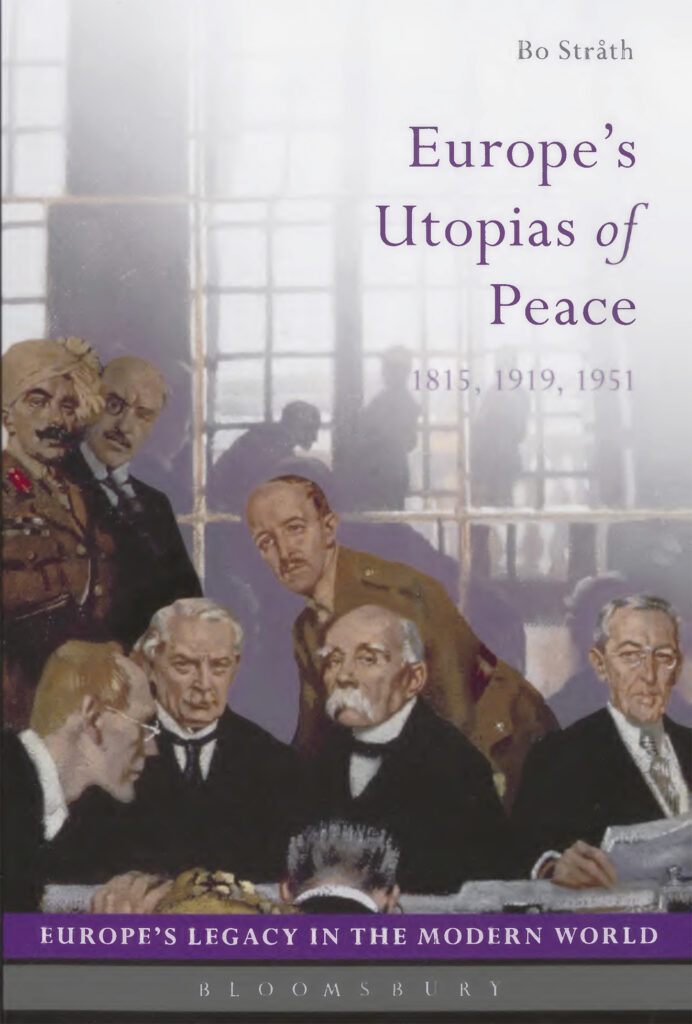
Abstract
Europe’s Utopias of Peace explores attempts to create a lasting European peace in the aftermath of the Napoleonic wars and the two world wars. The book charts the 250 year cycle of violent European conflicts followed by new utopian formulations for peace. The utopian illusion was that future was predictable and rules could prescribe behaviour in conflicts to come. Bo Stråth examines the reiterative bicentenary cycle since 1815, where each new postwar period built on a design for a project for European unification. He sets out the key historical events and the continuous struggle with nationalism, linking them to legal, political and economic thought. Biographical sketches of the most prominent thinkers and actors provide the human element to this narrative. Europe’s Utopias of Peace presents a new perspective on the ideological, legal, economic and intellectual conditions that shaped Europe since the 19th century and presents this in a global context. It challenges the conventional narrative on Europe’s past as a progressive enlightenment heritage, highlighting the ambiguities of the legacies that pervade the institutional structures of contemporary Europe. – See more at: https://www.bloomsbury.com/uk/europes-utopias-of-peace
Table of Contents
Acknowledgements
Introduction: Utopia, History and Teleology: The Bicentenary European Search for a Political Economy for Welfare and Warfare, and Struggle with Nationalism and Democracy
Chapter 1. The Vienna Peace Utopia of 1815 and the World of Trade
Chapter 2. Welfare: The Dissolution of the Vienna Peace Utopia from Within
Chapter 3. Warfare: The Dissolution of the Vienna Peace Utopia from Without
Chapter 4. Versailles: the Utopia of Peace through Democracy
Chapter 5. The Great Depression and the Collapse of the World Order
Chapter 6. After World War II: From the Utopia of Peace for the Cold War to the Euro-Crisis and the Search for a New Narrative
Epilogue: The Bicentenary European Struggle with Nationalism and Democracy, and Search for a Global Political Economy
London: Bloomsbury Jan 2016
From the Introduction:
The Outline of the Book: the Problem and the Perspective
This book is about what connects our time with the violent time two hundred years ago that followed on the French revolution. The argument of the book is that the connection is a chain of postwar peace treaties under the motto of ‘never again’ followed by prewar and war and a new cycle of postwar treaty of never again – prewar – war and a third postwar treaty of never again, where the question is whether the third postwar is still a relevant description of our time. This question is, of course, an impossible question, since it can only be answered through the filter of a new war, but nevertheless worth reflection.
The motto of ‘never again’ is utopian and the book explains why. Three postwar utopias of peace connect the revolutionary world of warfare around 1800 with our time. The book demonstrates, however, also that there was no necessity in this development, which was full of alternatives. The book confronts the conventional master narrative about Europe as a self-propelling machine fuelled by enlightenment values and belief in progress, but does expressly not outline a negative counter narrative about a continuous European tragedy of fate from postwar to prewar and war. The futures in the past were as open as ours. The book highlights the role and responsibility of human agency. It argues that no solution has been the necessary result of impersonal forces, everything has depended, and continues to depend, on human choice. This is the perspective through which the book wants to contribute to a new narrative on Europe, a new historical understanding of today’s Europe, an interpretation of its past that emphasizes the fragility of human projects, the openness towards the future, and the responsibility of human agency.
In the bicentenary sequence ‘postwar-prewar-war-postwar-prewar-war-postwar’, ‘postwar’ meant the concerted attempts at European unification under the motto of never again, prewar meant the erosion, and war the collapse of these attempts. The postwar designs were all as the book will show attempts to transcend the nations as the locus of political community. They all aimed at creating a European order or community, in Versailles the goal was even a global international community around the League. The repeated attempts to transcend the nations as organizational principle eschew teleological understandings of Europe. Nationalism replaced in the prewar and war phases the imagery of never again through international cooperation. Nationalism replaced the dreams of European unification.
The book analyses the three peace utopias of ‘Never again’ outlined in Vienna (1815), in Versailles (1919) and in Paris (1951), under their connection to outlines of a viable political economy for peace. The peace design had in all the three cases an economic dimension based on the insight that sustainable peace required a viable political economy. The link between peace and political economy was also a link between the interstate and the intrastate dimensions of the peace treaties. The European world wars were not only a matter of interstate relations. They were all in the wake of the French revolution driven by social conflict and protests around the national and the social questions, and by the attempts of both ruling elites and usurpers to canalize and control the protests. The wars had a domestic as well as a connected foreign political dimension and the peace designs built on this awareness.
International relations, IR, the academic discipline which analyses the preconditions of international peace, has often played down or ignored this connection between the social and the foreign and treated states in relation to other states as a series of black boxes with unknown content. The book systematically confronts this bias.
The peace utopias dealt with political stability and predictability. The thrust of the three utopias of peace was the belief that the peace treaties, the legal framing of international politics could guarantee durable if not perpetual peace. Their utopian nature derived from the belief that law dictates the framework for politics. However, the peace treaties would not serve as the straightjackets for international politics that the peacemakers assumed, but proved to be flexible instruments for creative politics with various possibilities of interpretation. The long-term problem of all three utopias was that international law and politics were not the separate units the utopias assumed. They were deeply entangled. Politics dictated law as much as law dictated politics. Normative prescriptions of future political actions became ex post descriptive legitimation of political decisions more or less disconnected from the legal prescriptions.
The three peace utopias and their eventual loss of suggestive force connects today’s global Europe with the post-Napoleonic world two hundred years ago. This connection through a series of illusions and disillusions about the nature of politics represents a different view on the nineteenth and twentieth century than the conventional teleological narrative about fulfillment of the enlightenment promise of progress.
Günter Grass’ phrase in The Tin Drum (1959), the epigraph of this book, that the war had spent itself, and new peace treaties were being boggled into shape that would give ground for more wars, stands as an ex post label of a bicentenary era. This great novel outlines the twentieth century in all its glories and catastrophes, paradoxes and ambiguities, to which the nineteenth century paved the ground. The tough and tardy transition during this period from agricultural to industrial, feudal and corporatist to capitalist, traditional to modern, parochial to cosmopolitan was far from linear evolution. Grass depicts the courages and discouragements, manias and paranoias, optimisms and pessimisms, cynicisms and idealisms, beliefs in conservative restoration and in social progress of an epoch that struggled to come to terms with experiences of accelerating time and shrinking space, an epoch that ‘harmonized chaos and intoxicated reason’ as Grass put it. The novel operates with allegories, grotesqueries, and reveries which described reality beyond fiction. Grass reflects on the anxieties and agonies, absurdities and alienations, which were part of the real world and drove humans in their search for solutions to continuously new problems. The most influential impact of the nineteenth century was restoration through conservative concessions. The twentieth century was totalitarian ideologies trying to step out of history in their absolute pretensions.
Peace was repeatedly proclaimed as postwar of never again with the conviction that the legally binding treaty was robust enough to guarantee lasting peace. This conviction was the utopia. Postwar slipped over into prewar and war. There was a search for a European or global political unification and for a global political economy with the aim to avoid this development, but with the paradoxical outcome that the search also came to underpin it. The search dealt with a political economy for welfare but also for warfare. Welfare and warfare were much more entangled concepts than we want to believe.
A series of tensions marked the European bi-century since 1815: between economic integration and social disintegration, i. e. between property and poverty, between constitutions legitimizing authoritarian power and constitutions legitimizing parliamentarian power, between geopolitics for military and commercial power and international law for the regulation of the global geopolitical conflict. These tensions dealt with the securing of welfare, the creation of political and cultural community, and the ordering of the world.
The nineteenth century has conventionally been seen as an époque during which the ideas of the French revolution − freedom, equality and solidarity (brotherhood) − began to be implemented. It was in this period that the long, problem-ridden yet irrevocable road from authoritarian rule towards constitutional monarchies and ultimately also parliamentary democracies began. Industrial capitalism spread, transforming poverty to wealth. European empires laid without much noise a web of military, economic and cultural power over the world. Seen in this light, the Vienna peace treaty of 1815 translated the experiences of the French revolution and Napoleon into a century of continental peace and stability.
The argument of the book however, is that this imagery, connecting fundamental enlightenment values to the present is too simplistic. It offers little insight into the reasons behind the outbreak of two connected world wars and the Russian revolution. Nor does it explain the continental experiences of totalitarianism in the twentieth century. The nineteenth century was far from a teleology of political and economic development from authoritarianism and penury to democracy and general wealth, as the dominating narrative suggests.
The book seeks to sketch the contours of an alternative, more realistic view on the nineteenth century and its links to the present. The search for a political economy to prevent a new war, often also at the same time to prepare for one, constituted a nexus of welfare and warfare. The search has been precisely that: a search: a process of trial and error, a learning process of successes and shortcomings in which victors and losers have tried to come to terms with their situation. There was little intrinsic or structural about 1914 but the more of failure of human agency and human imagination. Search stands for preliminary, without any final goal but with many final goals in conflict or overlapping. The search for a viable international political economy seemingly contradicts the utopia of normative stability. ‘Search’ implies looking for a new arrangement whereas stability implies a rejection of a new ordering of the things. The book sheds light on this paradox, as well as on the compatibility between stability and progress. It is argued that these opposites are not incompatible but instead reinforce each other.
.
CHAPTER 7
EPILOGUE: THE BICENTENARY EUROPEAN STRUGGLE WITH NATIONALISM AND DEMOCRACY, AND SEARCH FOR A GLOBAL POLITICAL ECONOMY
The bicentenary struggle with nationalism
Sequences of post-war-pre-war-war and a series of illusions and disillusions connect the era of the French revolution and the Napoleonic wars with our time. Construction contained the germ of destruction. The solution to a problem was the beginning of a new problem. Two constants in the bicentenary experiences of continuities and discontinuities were nationalism and imageries of democracy. Nationalism – together with democracy – was the great threat to the order that the Directorate wanted to establish in Vienna.
Nationalism remains the great threat to the European order in the present of the completion of this book. Nationalism – and democracy – were not only threats but also promises. In the present the promise of nationalism seems to be growing and that of democracy to be declining. Nationalism and democracy were the key concepts around which the three utopias of peace were built in 1815, 1919 and 1951, as threat and as promise, and also the factors which undermined the utopias.
Nationalism has been an Ariadne thread through the two centuries since Vienna, which is not to say that it has been a constant. Nationalism has shown many shifting faces: civic, ethnic, social in various blends. The struggle with nationalism – in all its variety and in its dual dimension of struggle against it and with it as an ideological tool – constitutes the constant.
In the vein of Ernest Gellner, Benedict Anderson, Eric Hobsbawm, Anthony Smith and many others, one can see nationalism as a social construct, an attempt to construct community against the backdrop of the challenges of modernity which often resulted in a lack of community and social cohesion. In particular Gellner emphasized the nation as the community produced by the modern state. Modern school teaching and mass alphabetization were important conveyors of nationalism. One of the most efficient instruments in the intellectual building of nations through nationalism was the imagery of ethnic demarcation to other nations with language as the most distinctive mark. Ethnicity was a basic building material of nationalism.
Of course, propagators of nationalism do not regard the nation as constructed but as a given. Nevertheless, ethnic identities are politically invented, constructed, manipulated and changed. Fictions of nation emerged through imageries of Us and Them, friend and enemy. Primordialist or essentializing theories of ethnicity or national self-determination must be rejected, but they have nevertheless been important arguments in the construction work.
Not only ethnicity through language but also other demarcations like religion were used in the construction of nations through nationalism. History was used as retrospective mythology based on selection of facts to remember, but also of what to forget as Ernest Renan phrased it in a classical statement: ‘Forgetting history, or even getting history wrong are an essential factor in the formation of a nation, which is why the progress of historical studies is often dangerous to a nationality.’
The French revolution shaped the image of nation less in terms of (ethnic) demarcation to other nations than in terms of unification of the citizens around a programme for political and social rights within a state nation, the civic nationalism. This was the kind of liberal nationalism that Giuseppe Mazzini a generation after the revolution propagated linking it to cosmopolitan ideas where he did not see the demarcation to other nations as a problem.
A key question of this book has dealt with how the nineteenth and twentieth-century debates on the social question, thematized since the 1830s, and on the class question, thematized since the 1870s, connected to and influenced ethnic and civic versions of nationalism.
Ethnic nationalism was an instrument to promote national unity threatened by social division. The European revolutions in the 1830s were still in the framework of Mazzini’s model for people’s sovereignty and civic rights against authoritarian regimes with vague demarcations to other nations. However, the liberal civic nationalism had few answers when the spread of industrial capitalism in the 1830s brought forward what was called the social question, which highlighted that national unification under the label of people’s sovereignty did not necessarily mean social unification. Industrial capitalism split the nations between those with property and those with poverty. In the European revolutions in 1848 the claims not only for freedom but also for social justice had a more prominent place than in 1830. The demarcation to other nations such as between Germany and Poland or Germany and Denmark was in 1848 not only more pronounced but also more hostile. The social issue promoted the imagery of competing nations rather than cooperating. The argument for protection against other countries, through trade tariffs, for instance, was a companion of nationalism.
Bismarck’s imagery of state socialism or social nationalism offered a moral tie, rather than civic political rights or ethno-cultural similarity, connecting subjects with the state. After Bismarck, social conservative, social democratic and peu en peu also social liberal approaches tried to combine a civic and a social definition of the nation. The social conservatives did it more in social paternalist top-down forms in order to integrate the subjects of the ruler rather than emancipate them as citizens. The social democratic bottom-up approach driven by the growing class language from the 1870s onwards focused on the enlargement of the citizen rights to the lower classes. The social conservatives developed concessions as a strategy to prevent revolution. The social democrats struggled for a social definition of citizenship. The conservative model worked with imageries of social monarchy, state socialism, social nationalism or national socialism as a counter-solution to the class struggle socialism.
The social integration of the nations occurred as competition between top-down and bottom-up approaches. Whereas the nineteenth and twentieth century development of the social nationalism often went together with ethnic nationalism there was continuously a social-democratic and social-liberal approach which sought to combine social and civic nationalism but also contained ethnic dimensions. The shifting power relationships between these two trends in various parts of Europe determined the shape of nationalism. Social imperialism was one expression of the unification of the ethnic and the social in perverted Darwinian/Spencerian perspectives of nations in competitive struggle for survival on world markets. The entanglement of the social and the ethnic was a strong mix which linked welfare to warfare and played down the role of civic nationalism. The entanglement paved the way towards 1914, which is not the same as saying that it caused the world war, since this was a much more complex issue.
Nationalism supported empire. This was obvious in the national/imperial unifications of Italy and Germany, where the social-ethnic nationalism was particularly crucial in the German case. The French Empire collapsed in 1871 when the German stood up. However, the Third Republic was like the British Empire on an ethnic civilizing world mission. In the Russian, Habsburg and Ottoman multi-ethnic empires nationalism was rather used as a device to negotiate degrees of national autonomy within the empires. Finland, Poland and Hungary represent different approaches in that respect as we saw in Chapter 3.
Versailles 1919 tried to combine civic nationalism and democracy under a world confederation for peace. Mazzini’s project recurred, and like his without any special attention to the social question. The attempt faced two great challenges:
1. The free trade, followed up with the gold standard for monetary stability, failed to cope with the social disintegration. This was obvious at the latest during the Great Depression when the social protests enforced general abandonment of the gold standard, and promoted protectionism which linked up with more ethnic forms of nationalism. Britain, France, the Netherlands, Belgium and the Scandinavian countries were among those countries which managed to maintain a strong civic dimension of the protectionist social nationalism. The decisive trend in the wake of the breakdown of the Versailles order went in the social-ethnic totalitarian direction, however.
2. Minorities took Woodrow Wilson’s promise of national sovereignty seriously and reinforced the ethnic dimension in their claims. The ethnic struggle about who was included in the civic nation confronted the conceptualisation of the nation in Versailles. A particular and fateful bias in the peace utopia was that the principle of national sovereignty did not apply for Germany.
One might see the paternalist Soviet system as a mutation of the paternalist Bismarckian system where the citizens like in Bismarck’s world were not citizens but subjects presumed to be neither politically active nor ethnically similar to each other, but loyal and grateful recipients. Both orders produced dependency rather than agency. Another mutation was the post-1945 Western Keynesian and ordo-liberal welfare states imagined as national communities of destiny against the backdrop of the Cold War. The West European economic integration played down the demarcation to other nations in the West. The comparison with the Soviet regime emphasized the civic difference, although there was also an ethnic demarcation in operation such as in the James Bond films, for instance.
The Cold War brought the European rescue of the nation state around the idea of welfare through economy of growth through free trade. A distribution of labour emerged in the European integration project between the community and the member state levels as we saw in Chapter 6. This (West) European model for a civic social nationalism in national welfare communities of destiny in the framework of the Cold War was the closest the continent came to Mazzini’s ideal of a merger of national sovereignty and international co-operation in a sui generis arrangement. As opposed to Mazzini’s imagery, the model in the 1950s and 1960s was based on an elaborated political economy which de-ethnicized the West-European nations and transformed them to communities of destiny based on the provision of welfare. Not ethnicity but ideology marked the demarcation between the liberal Western and the communist Eastern Europe. The civic nationalism promoted by the European integration project had a more distinct social profile than Mazzini’s model and the key word was welfare rather than citizen.
Nationalism is maybe not the right label, since it was less the matter of a loud ideology propagating the nation as opposed to other nations than softer feelings of national community which emerged through welfare. Another difference was that the West European unification was far from Mazzini’s cosmopolitan co-operation between the nations. It was a unification of states, rather than nations, prepared for war in the iron cage of the Cold War.
The collapse of the Bretton Woods order and the transformation of the labour markets in the 1970s with mass unemployment and social marginalization eroded the social integration and the prospects of affluent society. The new segmentation on the labour markets around company-specific schedules which differentiated between fixed and occasional employment broke down national solidarity patterns and identity constructions since the 1870s. The Keynesian utopia of the European rescue of the nation states lost credibility as a legitimizing point of reference.
In the new Hayekian neoliberal utopia the social dimension went lost in the new civic nations based on individual market-orientated European and national citizens. ‘Privatisation’ was a new key word meaning the outsourcing of welfare commitments from the public sphere to private entrepreneurship. After 1990 and the collapse of the Soviet empire the utopian prescription was in that respect the same in both Eastern and Western Europe, but the consequences were much more palpable in the East where hordes of Western economic experts recommended massive sales of state property to private interests as the fast king road to national wealth and democracy. The privatization project in Russia but also in other parts of the former Soviet Union like Ukraine ended up in a system of super-rich oligarchs. In both Eastern and Western Europe the income differences and the social marginalisation through unemployment increased. Against the backdrop of these developments Eric Hobsbawm explained the connection between nationalism and poverty:
But for those who can no longer rely on belonging anywhere else, there is at least one other imagined community to which one can belong: which is permanent, indestructible, and whose membership is certain. Once again, ‘the nation’, or the ethnic group, ‘appears as the ultimate guarantee’ when society fails. . . . xenophobia looks like becoming the mass ideology of the 20th century fin de siecle. What holds humanity together today is the denial of what the human race has in common.
Hobsbawm’s fin de siecle ethnic nationalism in Eastern Europe was the alternative that emerged to the social paternalism after the implosion of the Soviet Empire. It spread to the core of Western Europe in the 2000s when experiences of social precarity and destitution ever-more contradicted the promises of the 1990s of prosperity through market, civil society and global networks of smooth governance. When doubts about the social capacity of the market nations emerged, against the backdrop of persisting mass unemployment on precarious labour markets and of growing income cleavages, the xenophobic ethnic nations recurred conjured up from history as a new asylum of social justice and peace also in the West. Social division destabilized national unity. Xenophobia restabilized it. In the emerging imagery strangers appropriated jobs and dumped wages on tighter labour markets with uncertain future prospects. The lower classes constitute the basis of today’s French Front National and other similar nationalist movements all over Europe.
The growing internal European xenophobia along the Eastern-Western and Northern-Southern divides goes hand in hand with the attempts to protect Europe from immigrants from other parts of the world. The cemetery on the bottom of the sea outside Lampedusa is the most sinister and cynical illustration of the building of a European fortress.
Neo-nazi and Neo-fascist parties in many EU countries give a face to the xenophobic ethnic nationalism creating borders both within Europe and against non-Europe. In Hungary a state carrying party emerged on this ground. The distinction between democracy, populism and authoritarianism is being blurred when the ethno-nationalist language influence also the old political establishment struggling for survival on tight voting markets. The re-nationalization and the de-Europeanization erode the EU from within. The question for the future is whether/how a civic social pro-European project, after the failure of the civic market-orientated European project, can dilute the essentializing ethnic nationalism and turn it back into an open identification and allegiance with the EU.
Against the backdrop of these developments one might remember that a turning-point for Yugoslavia was the moment when economic conflicts about social distribution of the yields were interpreted as ethnic-national conflicts. The question that emerged with this shift was what would hold Yugoslavia together. The answer we know. It might be a good idea for European leaders to contemplate on the Yugoslavian destiny in a situation where the social question against the backdrop of the economic crisis accelerates the conflicts about identity.
The bicentenary struggle with democracy
− − −
Welfare and Warfare: Creating community and ordering the world
_ _ _
The search
‘Europe’s search for a political economy was a search for long-term stability. The reference to search underlines how tentative the formulation of a stabilizing legal framework and progressive economy was, full of trials and errors, failures and successes. ‘Search’ maintained the utopian belief in stability through legal order and progress through economic-theoretical prescription for growth and wealth. The search was the twin of utopia. Search was contention and debate, doubt and conviction. The economic debate was full of both warning examples and models for emulation across Europe. At the end of the Napoleonic wars, Britain was lauded as an ideal of industry and trade for wealth outstanding against the previous experiences of economies as deeply involved in warfare. With every decade of the nineteenth century the ideal became more nuanced, as its shadowy sides also became increasingly visible. Welfare was not welfare for all, and as little as previously did it necessarily entail opposition to warfare.
From Vienna onwards this search also engendered the separation of the past and the future from the present in a progressive understanding of time, which broke with earlier cyclical perspectives. The search was not least for mediating positions and a middle ground against the backdrop of a polarized debate when the utopia of a self-propelling political economy was exposed to social protest and class language, beginning in the 1830s, and escalating in the 1870s. Search equally translated in historical terms to negotiations about reforms driven by hopes for or threats of revolution.
The tentative search for a political economy became a more contentious matter of defining a position between free trade and protectionism. The references to the utopia of a seamless global economy of growth were mixed with apologies for deviations from the normative prescriptions. It became clear that there was not one European model or a single trajectory for European development. There were not even national development trajectories, if we understand trajectory in terms of a path dependency. The development of European economies did not follow any intrinsic or historical logic built into the emerging industrial capitalist system or the histories of the European countries as many had argued.
The search also led representatives of ever more organized interests to attempt to accommodate to competition and disagreement, co-operation and agreement about how to manage the economies. These representatives tried to preserve as much as possible of what they defined as their interests through conflict or through majority-creating compromises. ‘Search’ implies preliminary, a process lacking a final goal but with many immediate goals in conflict or overlapping. There was no invisible hand guiding and managing the emerging economic system based on wage labour. The political economies in Europe were the result of many competing and cooperating wills. There was no master plan. The development was the sum of many histories.
However, the search for a solution was Europe-wide and was based on the belief in a master plan. Strong ideologies and powerful discursive structures narrowed down the scope of action and the openness of the future. The search came to an abrupt end around 1990 when the Soviet Union collapsed. The belief in the self-propelling market machine and the utopia of a seamless global economy of growth returned powerfully after its successive collapses in the 1870s, 1930s, and 1970s, and soon reached hegemonic proportions. The fall of the neo-liberal worldview in 2008 reactivated the search function under new preconditions of much more confusion and disorientation than previously.
Colonialism and imperialism searched for legitimacy through a patchwork of legal arrangements. Private law and public law overlapped and extra-territorial ad hoc arrangements indicated that sovereignty escaped territory, which is the case also with today’s competing legal regimes. The contentious search for the right law and the good economy, with a continuous revision of established solutions, represents the counterpoint of the utopian belief in stability. The two have co-existed ever since 1815.
The temporal spaces between the ruptures in the 1870s and the 1970s – one might also add the 1930s and 2008 – were not necessarily marked by a high degree of stability. There were continuous challenges to the established order, together with myriad conflicts and oppositions. Rather, by speaking of specific ruptures, the intention is to highlight moments during which the turmoil was particularly strong. The intervals between these ruptures in the 1870s, the 1930s, the 1970s and after 2008 have regularly been around half a century. While there is clearly no intrinsic historical force behind this regularity, it is interesting to consider it in generational terms. Half a century is roughly one-and- a-half generations, the time when collective memories begin to fade and bitter experiences may come to be seen in new light.
Whatever the Vienna, Versailles and Paris orders were, they were never stable. Continuous challenges from within and without in mutually reinforcing dynamics destabilized the established orders. Already in the 1820s, nationalist claims confronted the Vienna order from within. Britain abandoned the Vienna coalition in an attempt to reinforce its Atlantic power; it supported the revolts in South America against Spain with an eye to the development in its own former colonies in North America. The defence of Britain’s commercial and colonial power established in 1815 began early and by the end of the 1830s it had led to tense relationships with Russia. This was not only a tension between the sea power and the land power among the Vienna victors. The geopolitical commercial power struggle was underpinned by the ideological struggle between liberal Britain and Russia, with the latter depicted as the incarnation of reaction. In Vienna, liberalism had been the great threat. Now it became a model to follow. The revolution in 1848, the Crimean War (1853–1856), and the Italian and German unification wars 1859–1871 demonstrated the instability of the proclaimed stability. The establishment of the German empire gave rise to a very different situation in which the hegemon of Vienna was no longer only challenged by the competing land power of Russia. A system of rival empires drawing on nationalist languages emerged: Britain, Germany, Russia, the USA, Belgium, the Netherlands, Italy, and even France, the loser to Germany in 1871, continued to make imperial claims, as did the eroding Ottoman Empire. The imperial rivalry destabilized the European order from without. The class language and the domestic polarization in its wake destabilized the situation from within. The displacement of the class conflict to the colonies (social imperialism) was an attempt to re-establish lost stability, which was what the European search was about.
The argument advanced in this book, that the nineteenth and twentieth centuries were more complex and contradictory than the conventional liberal-Marxist compound, fraught with teleological assumptions, does not exclude that the century was full of belief in progressive goal-bound developments. Images of hope and expectations of economic growth and civilizing progress oscillated with fears of the new and apprehensions about the breakdown of tradition. The positive side of the development was never a one-way issue, nor did it constitute a self-propelling machinery driven by inherent forces in history, as strong ideological vocabularies propagated. Rather, it was the slow outcome of a process of trial and error full of alternatives produced by human agency.
Accelerating time and shrinking space: the gap between experience and expectations
− − −
